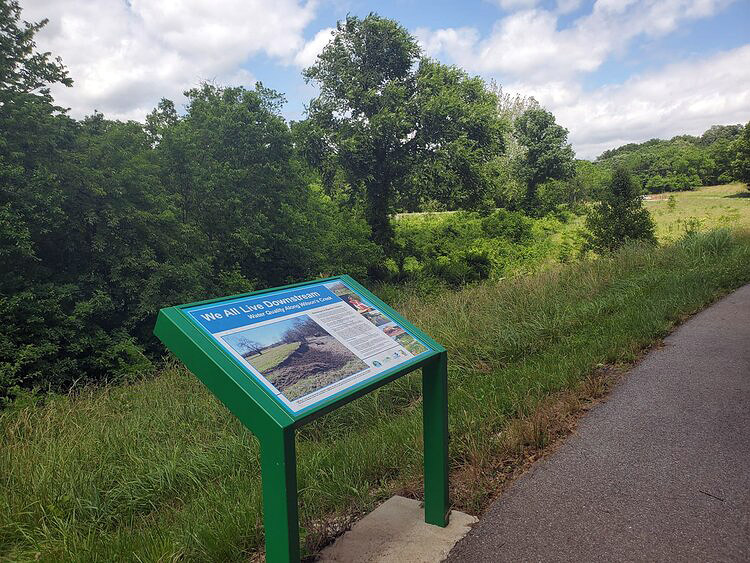Above my desk is a poster with an idyllic Ozarks river scene, complete with a beached canoe on a gravel bar. “Without trees…we’d be up a creek without a paddle,” the poster states, reminding me of the importance of trees to protecting water quality. How exactly do trees serve as a buffer against stormwater runoff and pollutants? Let’s pull back the tree canopy and a take a look!
A riparian area includes trees, shrubs and native grasses that grow along the banks of streams and lakes. This creates a “buffer zone” along the stream that helps slow runoff as well as spreading out excess water and holding sediment before it can be washed into the stream. According to the Arbor Day Foundation, more than 80 percent of nitrogen and phosphorus can be kept from entering a stream by being trapped by riparian forest. In addition, riparian areas act as a sponge, soaking up excess water and recharging our groundwater supply.
Besides being known for their water quality benefits, riparian buffers also create habitats for a variety of wildlife. Buffer zones contain food, and cover and serve as important travel corridors for wildlife. In addition, tree-shaded banks provide cool water and cover for the many species of fish and other aquatic creatures that live in our local waters. In this case, fish really do “grow on trees”. And it’s not just animals that benefit; humans can also enjoy a cool, shady spot to fish, canoe or kayak.
And while it may not seem like trees found in our urban areas are involved in protecting our local waters, they do play an important role in managing stormwater runoff. Tree-lined streets in urban areas help reduce and filter runoff. Leaves slow falling rain drops, helping to prevent soil erosion, as well as building a spongy layer of organic matter which soaks up excess rainfall. Trees also increase property values and provide economic benefits like lower heating and air-conditioning costs, as well as pleasant places for recreation and education. Rain gardens and detention basins, planted with native shrubs and grasses, can also soak up nutrients and pollutants draining from parking lots and streets.
One important principle in terms of urban trees is the “Right Tree, Right Place” concept. According to the Abor Day Foundation, a homeowner should research and plan to plant native trees that will grow well in your neighborhood’s soil and avoid potential problems with power lines and other infrastructure.
A number of communities throughout the Ozarks are involved in the Arbor Day Foundations’ Tree City USA program, which has encouraged cities and towns across the country to manage and expand tree canopy coverage since 1976. Communities with Tree City USA status meet four core standards of urban forestry management, including maintain a tree board or urban forestry department, having a community tree ordinance, and spending at least $2 per capita on urban trees and holding an annual Arbor Day celebration. Springfield has been a Tree City USA member for 35 years.
At JRBP we like to remind folks to “love your water”, a sentiment similar to the idea that we love future generations when we plant trees whose shade we will never sit in. The simple act of planting a tree helps protect our most valuable resource: our local water. As Aldo Leopold once said, “Acts of creation are ordinarily reserved for gods and poets. To plant a pine, one need only own a shovel.”
We’ll see you on the river – preferably under the shade of some sycamores.
Todd


